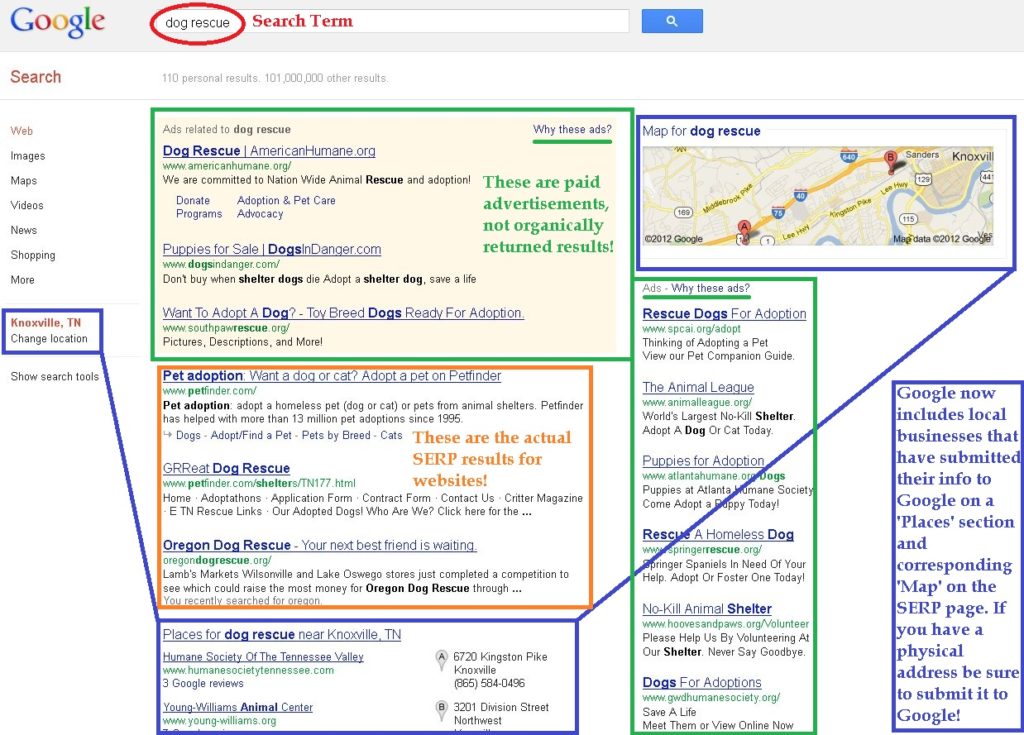A search engine results page (SERP) is the page displayed by a search engine in response to a query by a searcher. The main component of the SERP is the listing of results that are returned by the search engine in response to a keyword query, although the page may also contain other results such as advertisements. SERP is an acronym for Search Enchine Result Page and is frequently used by SEO professionals.
A SERP is displayed as a response to a query and is built by search engine algoritms for his organic part.
SERP content is usually divided between organic search results and sponsored links, but for some queries with little commercial potential there is no paid result.
The first organic link on the first SERP is the ultimate goal of each SEO professionnal.
Every SERP is unique, even for search queries performed on the same search engine using the same keywords or search queries. This is because virtually all search engines customize the experience for their users by presenting results based on a wide range of factors beyond their search terms, such as the user’s physical location, browsing history, and social settings. Two SERPs may appear identical, and contain many of the same results, but will often feature subtle differences.
The appearance of search engine results pages is constantly in flux due to experiments conducted by Google, Bing, and other search engine providers to offer their users a more intuitive, responsive experience. This, combined with emerging and rapidly developing technologies in the search space, mean that the SERPs of today differ greatly in appearance from their older predecessors.
‘Organic’ Results
SERPs typically contain two types of content – “organic” results and paid results. Organic results are listings of web pages that appear as a result of the search engine’s algorithm (more on this shortly). Search engine optimization professionals, commonly known as SEOs, specialize in optimizing web content and websites to rank more highly in organic search results.
In the following figure, the highlighted results are all organic results:

The box on the right side of this SERP is known as the Knowledge Graph (also sometimes called the Knowledge Box). This is a feature that Google introduced in 2012 that pulls data to commonly asked questions from sources across the web to provide concise answers to questions in one central location on the SERP. In this case, you can see a wide range of information about Abraham Lincoln, such as the date and place of his birth, his height, the date on which he was assassinated, his political affiliation, and the names of his children – many of which facts have their own links to the relevant pages.
Some SERPs will feature significantly more organic results than others, such as the example above. This is due to the differing intent of various searches. There are three primary types of Internet search:
- Informational
- Navigational
- Transactional
Informational searches are those in which the user hopes to find information on a given topic, such as Abraham Lincoln. It wouldn’t make much sense to place ads or other types of paid results on a SERP like this, as the search query “Abraham Lincoln” has very low commercial intent; the vast majority of searchers using this search query are not looking to buy something, and as such only informational results are displayed on the SERP.
Navigational queries are those in which the user hopes to locate a specific website through their search. This may be the case for individuals searching for a specific website, trying to locate a website whose URL they can no longer remember, or another type of navigational objective.
Finally, transactional searches are those in which paid results are most likely to be displayed on the SERP. Transactional searches have high commercial intent, and search queries leading to transactional SERPs may include keywords such as “buy” and other terms that suggest a strong desire to make a purchase.
